Dichlorodiphenylsilane
Synonym(s):Diphenyldichlorosilane
- CAS NO.:80-10-4
- Empirical Formula: C12H10Cl2Si
- Molecular Weight: 253.2
- MDL number: MFCD00000489
- EINECS: 201-251-0
- SAFETY DATA SHEET (SDS)
- Update Date: 2025-01-27 09:38:02
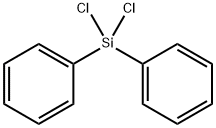
What is Dichlorodiphenylsilane?
Description
Diphenyl dichlorosilane is a colorless liquid. Ithas a sharp, pungent, HCl-like odor. Molecularweight= 253.21; Specific gravity = 1.22 at 25℃; Boilingpoint= 305℃; Autoignition temperature= 633.6℃; Flashpoint= 142℃ (oc). Hazard Identification (based on NFPA704 M Rating System): Health 3, Flammability 1,Reactivity 2 . Reacts with water; insoluble.
Chemical properties
Diphenyldichlorosilane is a colorless liquid with a pungent odor. It will burn though it may require some effort to ignite. It is decomposed by water to hydrochloric acid with evolution of heat. It is corrosive to metals and tissue.
The Uses of Dichlorodiphenylsilane
Dichlorodiphenylsilane is a silane based surface modifier, and a precursor which can be used in the synthesis of silica based materials. It is used to modify the surface by providing toughness, durability and resistance to shock. It can be used in the synthesis of a host material for the fabrication of blue phosphorescent organic light emitting diodes (OLEDs).
Reactivity Profile
Chlorosilanes, such as Dichlorodiphenylsilane, are compounds in which silicon is bonded to from one to four chlorine atoms with other bonds to hydrogen and/or alkyl groups. Chlorosilanes react with water, moist air, or steam to produce heat and toxic, corrosive fumes of hydrogen chloride. They may also produce flammable gaseous H2. They can serve as chlorination agents. Chlorosilanes react vigorously with both organic and inorganic acids and with bases to generate toxic or flammable gases.
Health Hazard
Inhalation irritates mucous membranes. Contact with liquid causes severe burns of eyes and skin. Ingestion causes severe burns of mouth and stomach.
Flammability and Explosibility
Not classified
Safety Profile
A poison irritant to skin, eyes, and mucous membranes. See also CHLOROSILANES. Can react vigorously with oxidizing materials. When heated to decomposition or on contact with acid or acid fumes it emits toxic fumes of Cl-.
Potential Exposure
This material is used in the synthesisof silicone lubricants.
First aid
If this chemical gets into the eyes, remove anycontact lenses at once and irrigate immediately for at least15 min, occasionally lifting upper and lower lids. Seek medical attention immediately. If this chemical contacts theskin, remove contaminated clothing and wash immediatelywith soap and water. Seek medical attention immediately. Ifthis chemical has been inhaled, remove from exposure,begin rescue breathing (using universal precautions, including resuscitation mask) if breathing has stopped and CPR ifheart action has stopped. Transfer promptly to a medicalfacility. When this chemical has been swallowed, get medical attention. If victim is conscious, administer water ormilk. Do not induce vomiting. Medical observation isrecommended for 2448 h after breathing overexposure, aspulmonary edema may be delayed. As first aid for
storage
Color Code—White: Corrosive or ContactHazard; Store separately in a corrosion-resistant location.Diphenyl dichlorosilane must be stored to avoid contactwith oxidizers (such as perchlorates, peroxides, permanganates, chlorates, and nitrates), bases, alcohols, and acids,since violent reactions occur. Store in tightly closed containers in a cool, well-ventilated area away from water,steam, and moisture because toxic and corrosive chloridegases, including hydrogen chloride, can be produced.Sources of ignition, such as smoking and open flames, areprohibited where diphenyl dichlorosilane is used, handled,or stored in a manner that could create a potential fire orexplosion hazard
Shipping
This compound requires a shipping label of“CORROSIVE.” It falls in Hazard Class 8 and PackingGroup II.
Incompatibilities
Vapors can irritate the eyes, nose,and throat. Higher levels could irritate the lungs and evenlead to pulmonary edema, a medical emergency. This cancause death. This substance is a corrosive chemical andcontact can cause severe skin burns and severe eye burnsleading to permanent damage.
Properties of Dichlorodiphenylsilane
| Melting point: | -22 °C |
| Boiling point: | 305 °C(lit.) |
| Density | 1.204 g/mL at 25 °C(lit.) |
| vapor density | >1 (vs air) |
| vapor pressure | 2 mm Hg ( 125 °C) |
| refractive index | n |
| Flash point: | 316 °F |
| storage temp. | Store below +30°C. |
| solubility | soluble in Chloroform, Ethyl Acetate |
| form | Liquid |
| color | Clear colorless to yellow |
| Specific Gravity | 1.221 |
| Water Solubility | DECOMPOSES |
| Sensitive | Moisture Sensitive |
| Hydrolytic Sensitivity | 8: reacts rapidly with moisture, water, protic solvents |
| BRN | 609882 |
| Stability: | Stable. Moisture sensitive. Flammable. Incompatible with strong oxidizing agents. |
| CAS DataBase Reference | 80-10-4(CAS DataBase Reference) |
| NIST Chemistry Reference | Diphenyldichlorosilane(80-10-4) |
| EPA Substance Registry System | Benzene, 1,1'-(dichlorosilylene)bis- (80-10-4) |
Safety information for Dichlorodiphenylsilane
| Signal word | Danger |
| Pictogram(s) |
 Corrosion Corrosives GHS05  Skull and Crossbones Acute Toxicity GHS06 |
| GHS Hazard Statements |
H310:Acute toxicity,dermal H314:Skin corrosion/irritation |
| Precautionary Statement Codes |
P270:Do not eat, drink or smoke when using this product. P280:Wear protective gloves/protective clothing/eye protection/face protection. P303+P361+P353:IF ON SKIN (or hair): Remove/Take off Immediately all contaminated clothing. Rinse SKIN with water/shower. P305+P351+P338:IF IN EYES: Rinse cautiously with water for several minutes. Remove contact lenses, if present and easy to do. Continuerinsing. |
Computed Descriptors for Dichlorodiphenylsilane
New Products
1-Boc-4-cyanopiperidine tert-Butyl carbazate 1-(TERT-BUTOXYCARBONYL)-2-PYRROLIDINONE TETRABUTYLAMMONIUM CYANIDE TETRAHYDRO-2H-PYRAN-3-OL 3-Pyridineacrylic acid Nickel(II) perchlorate hexahydrate, 98% 4-Bromophenylacetonitrile, 95% 3-Bromo-4-fluoroaniline, 97% Sodium tetraborate decahydrate, 98% Palladium(II) acetate, trimer, Pd 99% 4-Bromo-2-chlorotoluene, 97% Tadalafil Clopidogrel bisulfate Sitagliptin Phosphate Monohydrate Cabergoline Fexofinadine HCl Etoricoxib 4-Amino Acetophenone 2-Chloro Acetophenone Amlodipine Base 2,3,5-Triiodobenzoic Acid Pyrrolidine Diiodo PentoxideRelated products of tetrahydrofuran
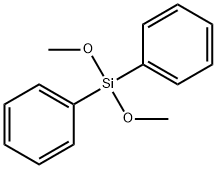
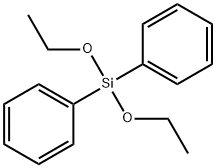
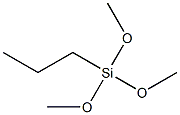
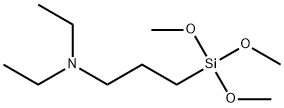
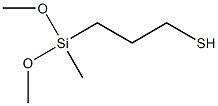
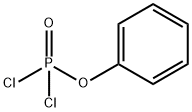
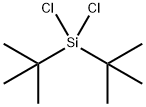

You may like
-
 Dichlorodiphenylsilane CAS 80-10-4View Details
Dichlorodiphenylsilane CAS 80-10-4View Details
80-10-4 -
 Dichlorodiphenylsilane, 97% CAS 80-10-4View Details
Dichlorodiphenylsilane, 97% CAS 80-10-4View Details
80-10-4 -
 Dichlorodiphenylsilane CAS 80-10-4View Details
Dichlorodiphenylsilane CAS 80-10-4View Details
80-10-4 -
 Dichlorodiphenylsilane CAS 80-10-4View Details
Dichlorodiphenylsilane CAS 80-10-4View Details
80-10-4 -
 366789-02-8 Riveroxaban 98%View Details
366789-02-8 Riveroxaban 98%View Details
366789-02-8 -
 Carvedilol 98%View Details
Carvedilol 98%View Details
72956-09-3 -
 73590-58-6 Omeprazole 98%View Details
73590-58-6 Omeprazole 98%View Details
73590-58-6 -
 Sertraline HCl 98%View Details
Sertraline HCl 98%View Details
79559-97-0
